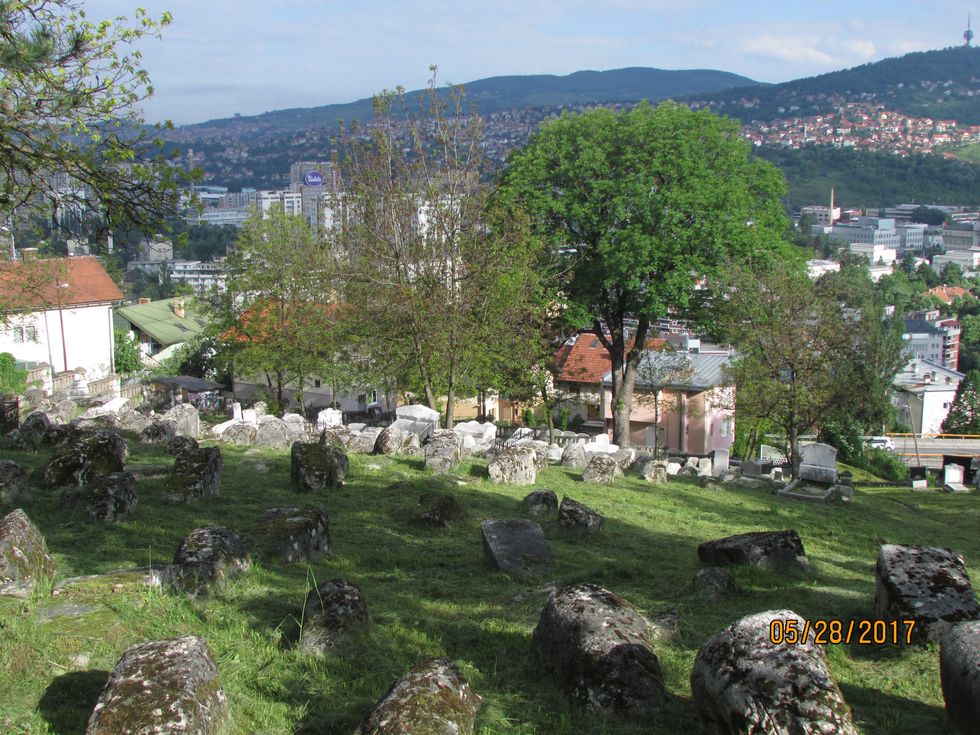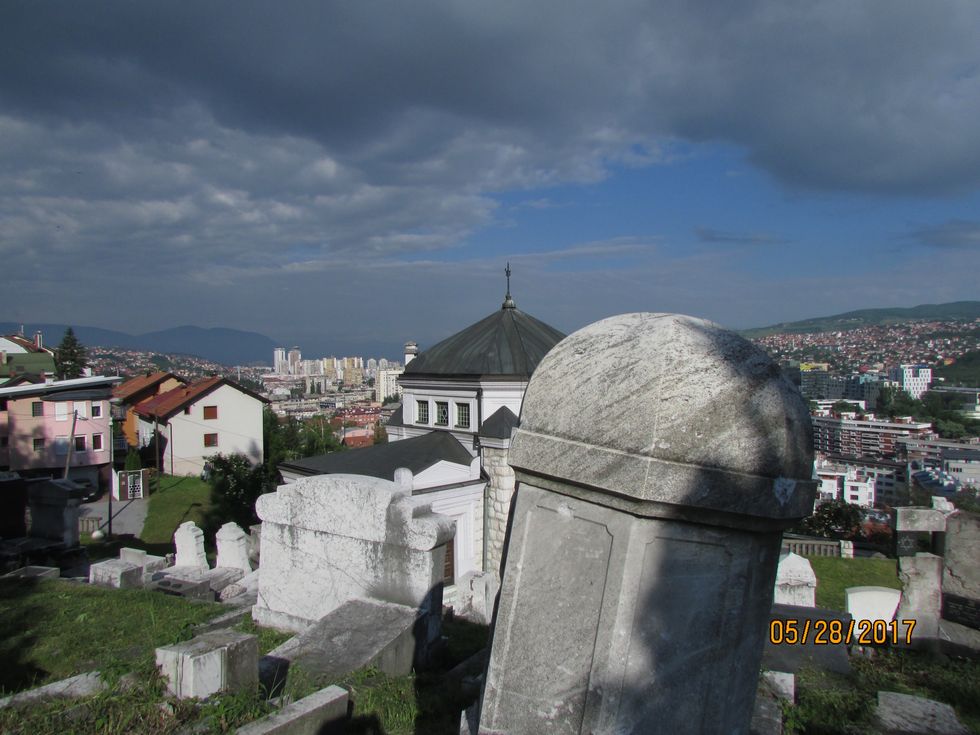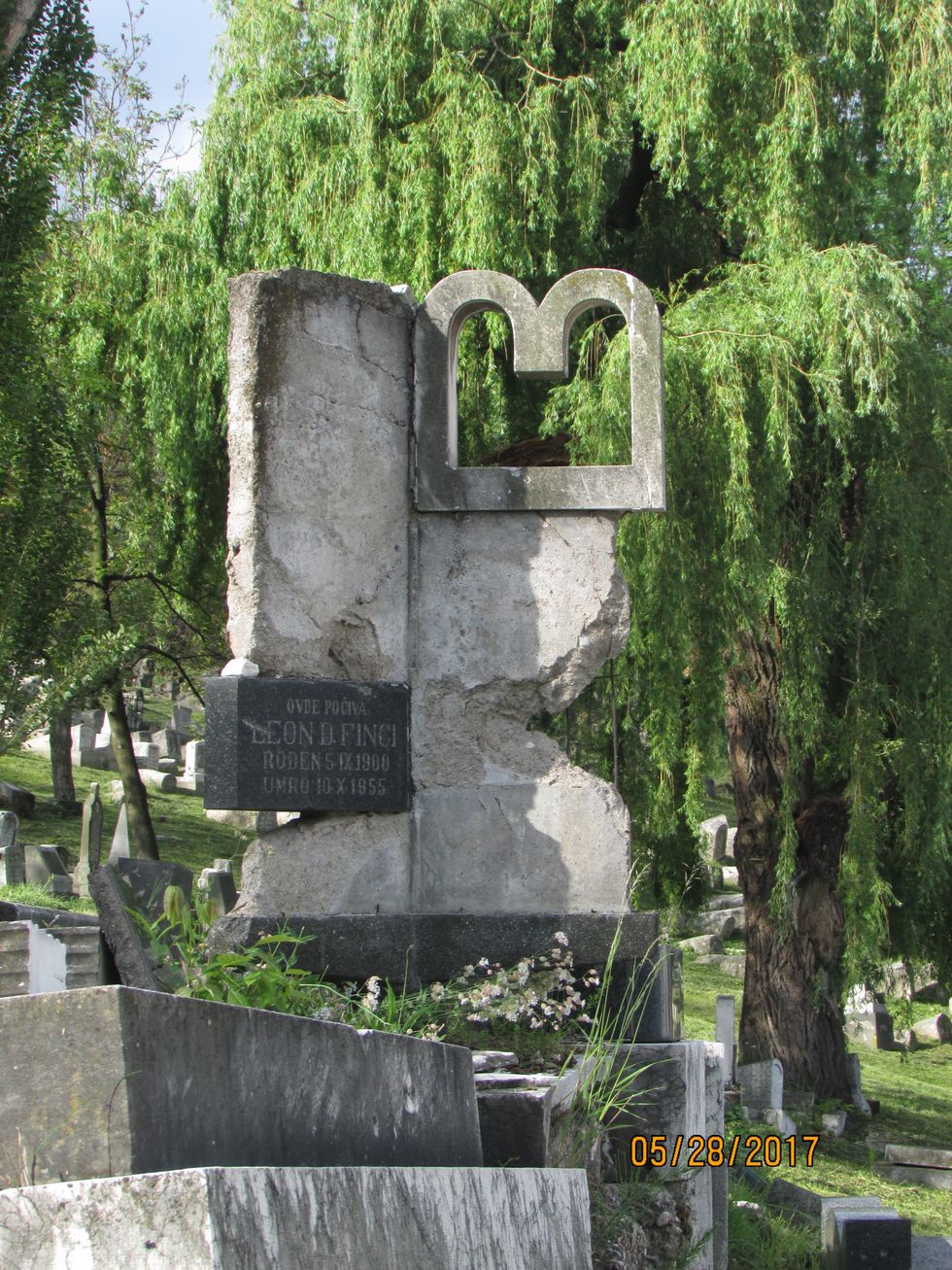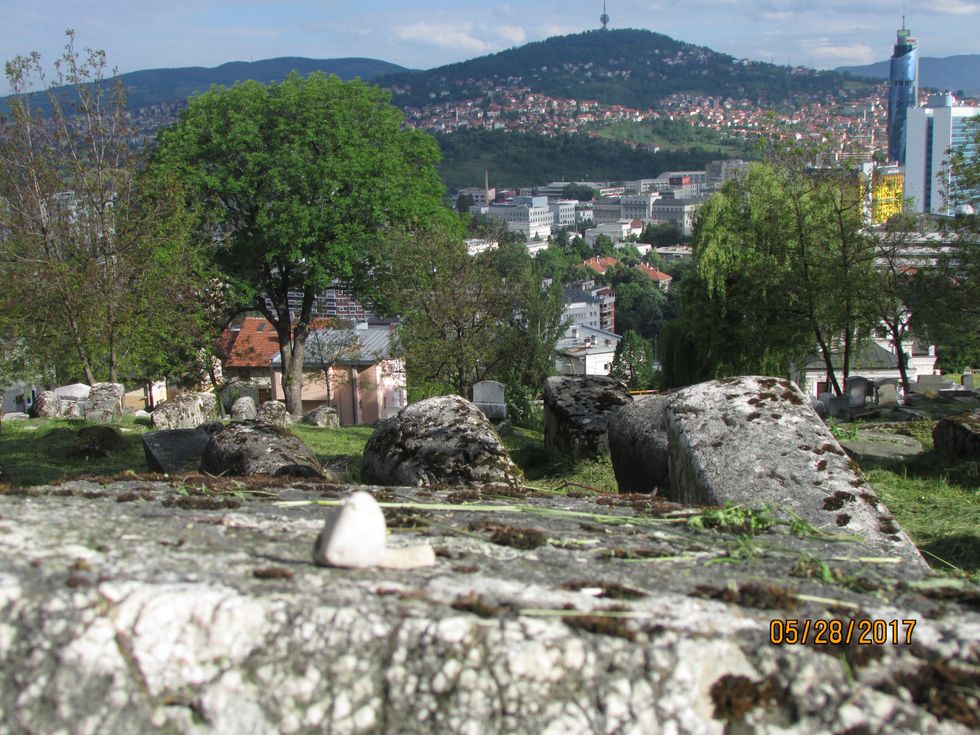Picture this. It’s 7:30 a.m. in the city of Sarajevo. Standing on a hillside looking into the valley below, you watch the city just waking up. Fog plays along the edges of the valley, dog barks and car horns echo from somewhere below. To your left and right are your classmates, fellow travelers and students, along with your English professor, and immediately surrounding you everywhere are the gravestones of some of the oldest Jewish families in Bosnia.
Did you imagine something like this?
In this graveyard, there are no flowers on graves. There are no portraits of loved ones or ribbons or flags. Many graves are all but buried in grass and weeds. The inscriptions are nigh unreadable, and the majority of them are peppered with small gouges and notches. Bullet holes.
The Balkan Wars did a number on the historically relevant buildings and landmarks in Bosnia and western Croatia. How do you display to an entire race of people that you hate them, their culture, and their very identity? Burn the libraries and bomb the churches. Many of the historic sites we visited during the East Meets West Mayterm had been partially or totally destroyed at one point or another during their history, be it during World War I, World War II, or the Balkan Wars. Overwhelmingly, these places had been or were in the process of being rebuilt. We visited the National Library in Sarajevo, which had contained a wealth of ancient texts and art essential to Bosnian culture. When the city was put under siege in the 1990’s, this library was burnt to the ground. Brave volunteers and employees were able to save a fraction of the books, but much of it was lost. Entering into the building in May of 2017, you would never know that less than 40 years ago it had been completely destroyed. It has been rebuilt and converted into Sarajevo’s City Hall, and only the memorial in the basement gives a suggestion of the prior devastation.
Above: Restored Library; Below: Library following fire
On the contrary, the Jewish cemetery pictured earlier has remained in shambles. Why?
When we think of World War II, of course, we remember the Holocaust. But we never stop to think about the fact that the Jews who were killed were not just random human beings pulled out of thin air to become a statistic in a textbook. Maybe we can’t wrap our minds around so large a number, but 6 million Jews being killed in the Holocaust means that very few family members remain to honor those who are dead.
They can’t bring flowers because they have fled for their lives. They can’t petition for better groundskeeping because there is nobody left to do the petitioning. This cemetery became a battleground, and there’s no one left to fix the damage left by the snipers. They leave small rocks on graves, not flowers, because flowers need to be replaced and they might not get a chance to do that. Maybe rocks are not a typical, beautiful memorial with a lavish ceremony. Rocks will never wilt, they’re not valuable enough to steal. But they pay homage to the dead, in their own way. Maybe the cemetery will never be rebuilt or look new again, but the dead will be remembered, no matter what.







 Photo by
Photo by  Photo by
Photo by  Photo by
Photo by 



















